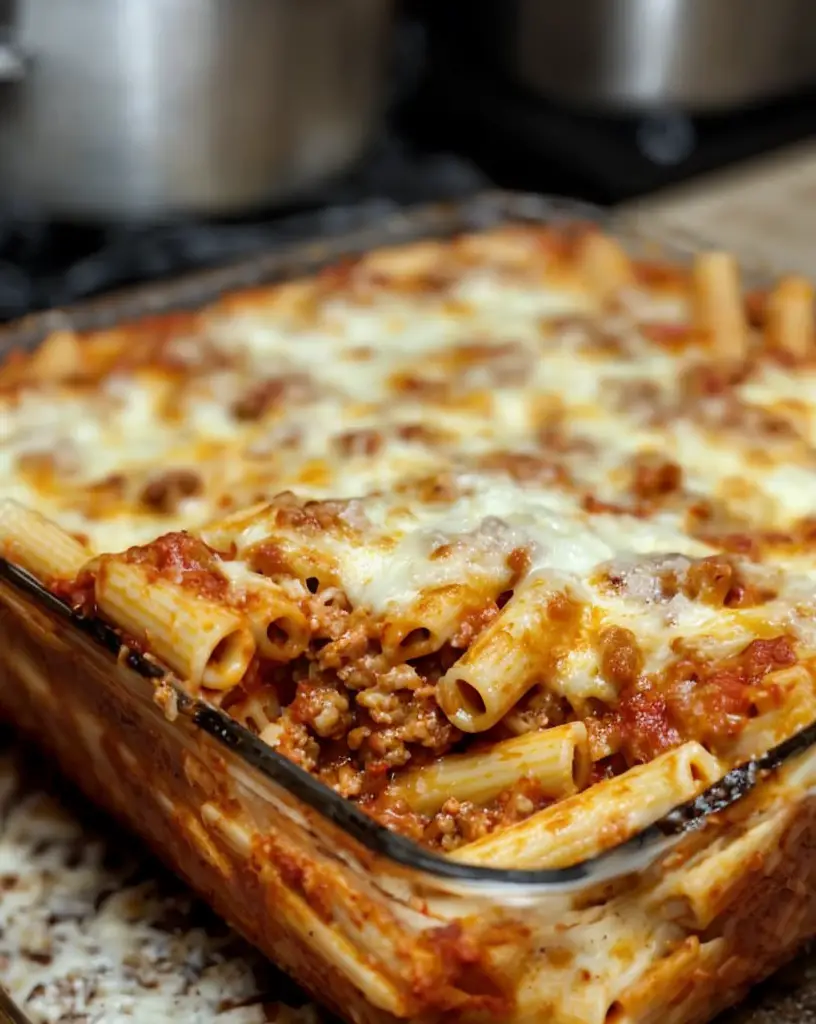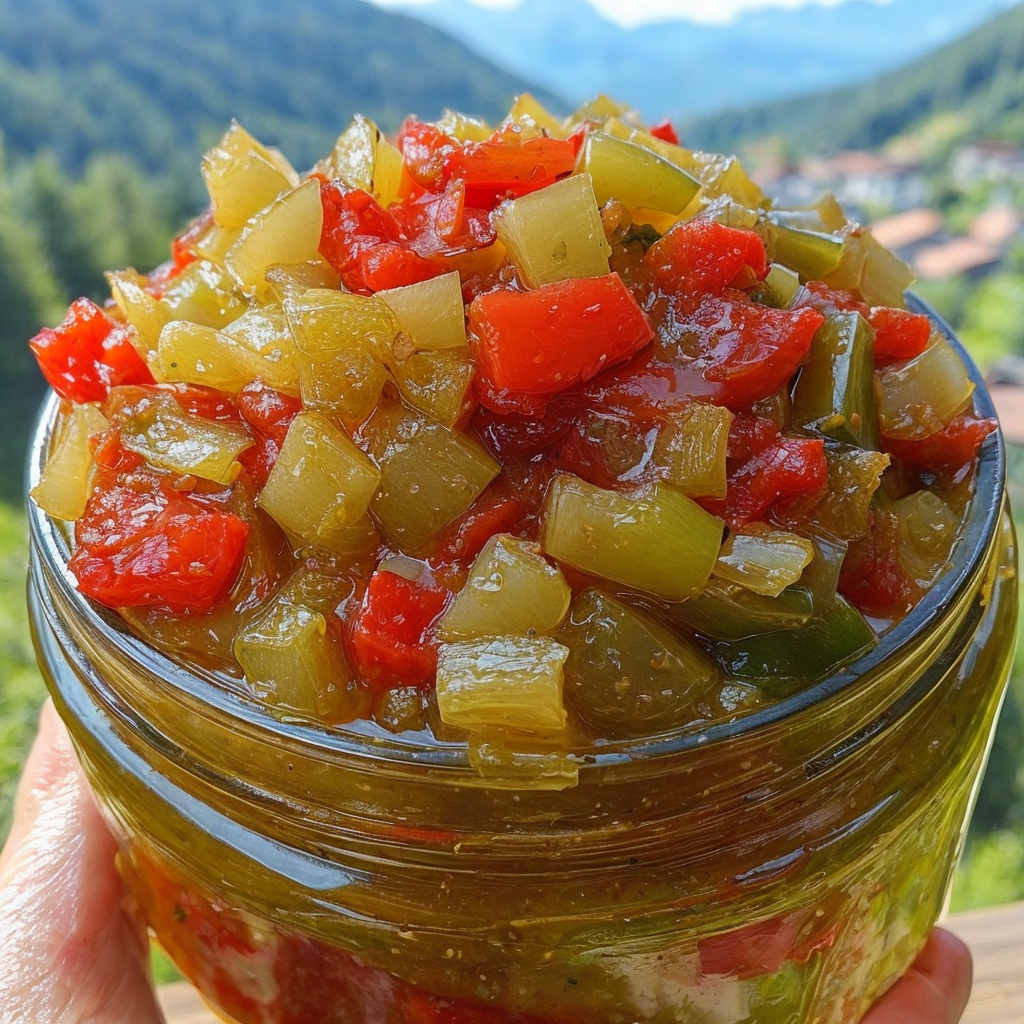Homemade Soft Pretzels: A Delicious Snack for Any Occasion
If you’re looking for a delightful homemade snack, this Homemade Soft Pretzels recipe is sure to satisfy your cravings. Imagine biting into a golden-brown pretzel with a perfectly chewy texture, bursting with flavor from a sprinkling of coarse sea salt. Not only are these pretzels a great snack, but they also make for an impressive treat at gatherings, parties, or game-day celebrations. The aroma of freshly baked pretzels wafting through your kitchen will transport you to your favorite street vendor while giving your home a warm, inviting atmosphere.
What makes this Homemade Soft Pretzels recipe even more appealing is the fact that they are surprisingly easy to make with simple ingredients you probably already have in your pantry. Whether you enjoy them plain or with a scrumptious cheese dip, these pretzels are versatile enough to match any palate. Cooking can be a wonderful family activity, and this recipe is perfect for getting everyone involved in the fun of twisting, shaping, and tasting! Get ready to enjoy the wonderful world of homemade pretzels.
Quick Recipe Highlights
- Flavor Profile: Soft pretzels have an incredible balance of salty and slightly sweet flavors, enhanced by the baking soda bath that gives them their signature color and taste.
- Texture: These pretzels boast a chewy outside and a soft, pillowy inside, creating a delicious contrast that is immensely satisfying.
- Aroma: The toasty aroma of freshly baked dough and melted butter combined with a hint of salt makes these pretzels irresistible.
- Visual Appeal: These heartwarming treats have a beautiful golden-brown hue, creating an inviting look that draws everyone in.
- Skill Level Needed: Making pretzels requires a moderate skill level due to the dough preparation and shaping techniques, but the satisfying results are worth it!
- Special Equipment: You will need basic kitchen equipment including a mixing bowl, baking sheet, and a pot for boiling the pretzels.
Recipe Overview
- Difficulty Level: This recipe is of moderate difficulty, perfect for those who are comfortable with basic baking techniques. The most challenging part is shaping the pretzels, which becomes easier with practice.
- Category: Soft pretzels can be categorized as snacks or appetizers, often enjoyed at parties, movie nights, or as a satisfying treat any time.
- Cuisine: Pretzels have a rich history in German cuisine but have also been embraced by American culture, particularly at sporting events and fairs.
- Cost: The approximate cost to make these delicious pretzels is low, typically around $5 to $10, depending on your ingredient choices.
- Season: Soft pretzels can be enjoyed year-round, but are especially popular during fall and winter months when people crave warm, comforting snacks.
- Occasion: Perfect for casual gatherings, sports events, or even simple family evenings at home, these pretzels add a fun twist to any occasion.
Why You’ll Love This Recipe
This Homemade Soft Pretzels recipe offers an amazing blend of taste and texture appeal that is hard to resist. Once you sink your teeth into the soft, pillowy dough coated in crunchy coarse salt, you’ll understand why these pretzels have become a beloved snack worldwide. Enjoyed on their own or with cheesy dips, each bite showcases a beautiful contrast in flavors that will keep you coming back for more.
Convenience plays a major role in this recipe’s allure. Unlike some baked goods that require intricate techniques or long explanations, these soft pretzels come together in one bowl, making it accessible for every home cook. You will enjoy the process of kneading and shaping the dough, encouraging family members to lend a hand and make lasting memories in the kitchen.
Let’s not forget the nutritional advantages these pretzels provide when made from scratch. You know exactly what goes into them, allowing you to control ingredients and portion sizes, ensuring a healthier snack option. By incorporating whole-grain flour or adding seeds for nutritional benefits, you can customize these pretzels to suit your dietary preferences.
Social gatherings become even more vibrant with homemade pretzels on the menu. Their interactive nature allows guests to participate in dipping sauces and flavor variations, fostering fun conversations and shared experiences around the table. Presenting these fresh pretzels at a party never fails to impress, making you the star of the event.
In terms of cost-effectiveness, creating homemade soft pretzels is a great way to indulge without breaking the bank. With just a few pantry staples, you can whip up a large batch for an affordable price, making them an ideal snack for large gatherings or family events.
Historical Background and Cultural Significance
The history of soft pretzels dates back to ancient times, believed to have originated with the Celts and Romans. These twisted bread formations were used as a reward for children who learned their prayers, symbolizing the embrace of religion through food. Over the centuries, they became popular in Germany, with various regions boasting their distinctive recipes, which eventually made their way to America.
During the 19th century, German immigrants introduced soft pretzels to the United States, particularly in Pennsylvania, which is now synonymous with this beloved snack. The Pennsylvania Dutch culture embraced the soft pretzel, leading to street vendors selling them in cities and towns across the region. Today, they have become a popular culinary staple at fairs and sporting events across the country.
As the recipe evolved, so did the method of preparation. Traditionally boiled in a special baking soda solution, the process creates the perfect chewy crust. This is one of the key modifications that distinguishes soft pretzels from other baked goods, showcasing the creativity and adaptability of chefs through the ages.
In the United States, regional variations have emerged, with cities like Philadelphia claiming the title of pretzel capital. Food trucks and small shops pop up featuring artisanal pretzels with localized toppings, celebrating the diversity of this simple yet delectable snack.
Ingredient Deep Dive
Flour: Flour, the foundation of pretzels, holds cultural significance in many societies and has been a central part of diets worldwide for centuries. Whole wheat flour offers more nutrients and fiber, whereas all-purpose flour provides a lighter texture. When selecting flour, look for high-protein content to yield a chewier pretzel. Store it in a cool, dry place and use it within six months for optimal freshness. Substitutions like gluten-free flour blends can be used for dietary restrictions.
Yeast: Yeast is a magical ingredient that brings the dough to life, causing it to rise and develop flavor. Yeast has a deep-rooted history in baking, with wild yeast strains being used since ancient Egypt. Nutritionally, yeast is a rich source of B vitamins and adds a unique flavor to baked goods. Opt for active dry yeast or instant yeast for best results, and always check expiration dates before using. Store yeast in a refrigerator or freezer for longevity, and if you’re out, baking powder could be used in limited quantities for different results.
Common Mistakes to Avoid
- Not measuring ingredients accurately: Precision is key in baking, especially with flour and water. Use a kitchen scale for the best results, as an incorrect ratio can lead to dense or undercooked pretzels.
- Overworking the dough: Kneading is essential, but overdoing it can cause a tough texture. Knead until just combined and slightly elastic for the best chewiness.
- Skipping the boiling step: Boiling pretzels in a baking soda solution is what gives them that signature flavor and rich brown color. Don’t skip this crucial step!
- Not preheating the oven: An adequately preheated oven is vital for ensuring that pretzels rise and brown evenly. Always allow at least 30 minutes for your oven to reach the right temperature.
- Not allowing enough time for rising: Patience is important—allowing the dough to rest and rise is essential for a soft, airy texture.
- Using insufficient salt: Coarse salt enhances flavor, so don’t skimp on the topping. Use the right amount for the best taste.
- Cutting into the dough prematurely: Letting the dough rest helps with gluten formation. Be sure to allow it to rise adequately before shaping it into pretzels.
- Failing to monitor baking time: Keep an eye on your baking pretzels as ovens can vary. A golden-brown appearance ensures they are perfectly baked.
Essential Techniques
Kneading: This essential technique develops the gluten structure in the dough, creating that desired chewy texture. Knead for about 5-7 minutes until the dough is smooth and elastic. To master this, make sure to use both hands, applying firm pressure while folding the dough over itself. Common pitfalls include not kneading enough or over-kneading, both of which can affect the texture. Look for a smooth surface and a slight bounce back when pressed to know you’ve succeeded.
Shaping: Shaping the dough into pretzels may seem intimidating, but it’s a fun process. Start with small pieces of dough, rolling them into long ropes before twisting and forming them into a classic pretzel shape. The aim is to create even thickness for a uniform bake. Common pitfalls include having too thick or thin parts, which can lead to uneven cooking. Aim for a rope about 20-24 inches long for ideal results, and practice makes perfect!
Pro Tips for Perfect Homemade Soft Pretzels
Here are some pro tips that can elevate your homemade pretzels. First, experiment with different types of salt for toppings. Flaky sea salt or seasoned salts can impart unique flavors. Second, try adding seasoning to your boiling water, like beer or garlic powder, to add an extra layer of flavor. Third, if you often have difficulty shaping dough, try using oily hands to prevent stickiness.
Consider pre-baking the pretzels for a few minutes to achieve a crispy exterior before finishing them in the oven. You can also brush them lightly with melted butter for an irresistible finish. If you prefer a sweeter twist, sprinkle cinnamon and sugar on top after baking. Lastly, remember that pretzels taste best served fresh out of the oven, so enjoy them immediately!
Variations and Adaptations
Variations on this Homemade Soft Pretzels recipe are endless. For seasonal adaptations, consider adding pumpkin spice to the dough in the fall or peppermint chips during the winter holidays. Dietary modifications can include gluten-free flour blends, making it friendly for those with gluten sensitivities.
Flavor variations allow you to infuse pretzels with different herbs and spices. Try mixing cheese into the dough for a savory cheese pretzel or topping the finished product with garlic powder and parmesan for an Italian twist. Tex-Mex adaptations can include jalapeños in the dough, while sweet caramel and chocolate sauces can be served for dessert-style pretzels.
Presentation alternatives can enhance the visual aspect of your pretzels. Try serving them on a rustic wooden board with various dips, like mustard, cheese, and marinara. You can also slice them into smaller bites for easy sharing at gatherings, making them an interactive treat for your guests.
Serving and Presentation Guide
Proper serving and presentation of your Homemade Soft Pretzels can elevate the eating experience. To plate your pretzels, arrange them neatly on a baking tray lined with parchment paper or a rustic wooden board. Add small bowls of dipping sauces, like homemade cheese sauce or spicy mustard, inviting guests to customize their flavors.
Consider garnishing pretzels with fresh herbs like parsley or rosemary for a colorful touch. For a modern feel, serve them in individual portion cups paired with a small bottle of craft beer. Temperature is important; pretzels are best served warm but can be reheated in an oven if needed. Portion control helps keep serving sizes manageable, allowing everyone to enjoy without overindulging.
Wine and Beverage Pairing
Pairing your Homemade Soft Pretzels with the right beverages can elevate your culinary experience. A light, crisp lager complements the salty chewiness of pretzels beautifully. For wine enthusiasts, a dry white wine like Sauvignon Blanc pairs well, cutting through the richness of toppings like melted cheese.
For non-alcoholic options, try pairing with sparkling water or homemade lemonade, refreshing the palate after each bite. Consider serving warm pretzels with spiced apple cider during fall gatherings for a seasonal treat. If coffee or tea is more your style, a robust dark roast can balance the salty flavors of the pretzels.
Storage and Shelf Life
Properly storing Homemade Soft Pretzels is essential for maintaining their fresh taste and texture. To store, allow them to cool completely, then place them in an airtight container at room temperature. They are best enjoyed fresh but can be kept this way for up to two days.
For longer storage, pretzels can be frozen. Wrap them tightly in plastic wrap and place them in a freezer bag, ensuring you remove as much air as possible. They can last up to three months in the freezer. To reheat, place them directly in a preheated oven until warm. Look out for signs of spoilage, such as hard textures or off-smells.
Make Ahead Strategies
If you want to save time, preparing the pretzel dough a day in advance is a great strategy. After the first rise, shape the pretzels and store them in the refrigerator. When you’re ready to bake, let them come to room temperature and proceed with the boiling and baking steps. This ensure that they are as fresh as possible.
Assembling pretzels ahead of time allows you to cut down on the effort needed on the day of serving. You can also freeze the shaped raw pretzels for a quick snack whenever needed. Just remember to thaw them fully before boiling and baking. Adding fresh toppings or dips upon reheating allows for an enjoyable experience each time.
Scaling Instructions
Scaling your Homemade Soft Pretzels recipe can be accomplished easily. To halve the recipe, simply divide all ingredients by two, keeping the same rising and cooking methods. For doubling or tripling, keep in mind the size of your mixing bowl and workspace, as you want enough room to knead and shape the dough properly.
Adjusting equipment may be necessary for larger batches, like using multiple baking sheets or larger pots for boiling. Keep an eye on timing as you scale; larger batches might require slightly more time in the oven depending on the size and arrangement. Lastly, always ensure your rise times remain consistent for optimal texture.
Nutritional Deep Dive
The nutritional breakdown of these Homemade Soft Pretzels reveals their merits as a snack. A typical pretzel contains approximately 150-200 calories, with an emphasis on carbohydrates and moderate protein content. Avoid refined white flour to increase the fiber content and decrease the glycemic index.
Vitamins and minerals present in pretzels depend on the type of flour used, with whole-grain flours providing additional nutrients. Consider adding toppings like sesame seeds, which are high in healthy fats, fiber, and essential vitamins. Overall, soft pretzels can fit into a balanced diet when enjoyed in moderation.
Dietary Adaptations
For those requiring gluten-free options, substitute the all-purpose flour with a gluten-free flour blend specifically designed for baking. Ensure that all other ingredients are gluten-free to maintain the integrity of the recipe.
Dairy-free adaptations can be made by using plant-based butter and ensuring that any dips are also dairy-free. Vegans can enjoy these pretzels by omitting the egg wash and instead using a plant-based milk alternative for the glossy finish.
Low-carb or keto dieters can explore recipes that utilize almond flour or coconut flour, which significantly alters the carbohydrate content and makes them more suitable for their dietary preferences. Such adaptations may require some experimentation for the desired texture and flavor.
Troubleshooting Guide
If you encounter texture issues with your pretzels, such as being too tough or too soft, check your kneading technique. Over-kneading can create a dense final product, while under-kneading can leave them too soft. Ensure proper rest times and gluten development to achieve the right balance.
Flavor balance can also be a concern; if they taste bland, consider adjusting the amount of salt or adding seasonings to the dough. If a specific ingredient isn’t cooperating, like baking soda, check that it’s fresh, and experiment by slightly tweaking the amount used in the boiling water solution.
Equipment challenges may arise with baking sheets or pans, leading to uneven results. Ensure that your selected pan allows for proper air circulation around the pretzels during baking. If you have timing concerns, verify the accuracy of your oven’s temperature and keep a close watch when baking for the best results.
Recipe Success Stories
Community feedback has showcased a significant joy for the shaping process, with families finding it fun to create unique twists and designs. Each individual’s adaptation tells a story, connecting home cooks with the joy of baking and sharing their creations.
Photography tips emphasize capturing the beautiful golden hues of the pretzels against rustic serving boards, adding to the visual allure of the final dish. Readers are encouraged to share their pretzel experiences, celebrating successes and learning together through photos and comments.
Frequently Asked Questions
1. Can I store leftover pretzels? Yes, homemade pretzels can be stored at room temperature in an airtight container, lasting 1-2 days. For longer storage, wrap them tightly and freeze them for up to three months.
2. Can I make the dough in advance? Absolutely, you can prepare the dough a day ahead and refrigerate it after the first rise. Just allow it to come to room temperature before shaping and boiling.
3. What can I serve with pretzels? Soft pretzels can be enjoyed with a variety of dips including mustard, cheese sauce, or even chocolate for a sweet treat. Get creative!
4. Can I make stuffed pretzels? Yes, you can stuff your pretzels with fillings like cheese, meats, or vegetables before shaping them for an exciting twist.
5. Are soft pretzels vegan? You can easily make soft pretzels vegan by omitting the egg wash and using plant-based butter or milk alternatives.
6. What should I do if my dough is too sticky? If your dough is sticky, sprinkle a little more flour to help it come together without overworking it.
7. Can I use whole wheat flour? Yes, whole wheat flour can be used for a healthier version of pretzels, although they may be denser.
8. What type of yeast should I use? Both active dry and instant yeast work well for this recipe. Just be sure to check the expiration date for freshness.
9. How do I make pretzels crispy? To achieve a crispier texture, ensure to bake them until golden brown and consider allowing them to cool completely on a rack after baking.
10. Can I make pretzel bites instead of full pretzels? Definitely! Just shape the dough into bite-sized pieces instead of traditional pretzel shapes for fun snackable bits.
Additional Resources
For more delicious recipes, consider exploring other dough-based snacks like homemade bagels or calzones. Supplement your baking skills with technique guides discussing kneading, resting dough, and proper ingredient ratios for success.
Learners can dive into ingredient information for better understanding of how different flours and yeasts interact in the kitchen, enhancing their overall baking experiences. Recommendations for kitchen equipment can also help aspiring bakers to choose versatile tools that promote kitchen efficiency and quality results.
Join the Conversation
Connect with fellow bakers by sharing your Homemade Soft Pretzels experiences on social media. Post your creations with hashtags to inspire others and garner feedback from the community. Engaging in recipe reviews allows for shared learning, further enhancing everyone’s baking abilities.
Don’t shy away from exploring variations! Share your creative takes on pretzels, as well as photography tips to improve the visual appeal of your delicious results. Together, we can celebrate the joy of cooking and the satisfaction of creating something wonderful for ourselves and our loved ones.
The Recipe
Homemade Soft Pretzels
Serves: 12 Pretzels
Prep Time: 30 mins
Cook Time: 15 mins
Total Time: 45 mins
Kitchen Equipment Needed
- Mixing bowl
- Baking sheet
- Parchment paper
- Pot for boiling water
- Whisk
- Measuring cups and spoons
- Kitchen scale (optional)
- Saucepan for cheese dip (optional)
Ingredients
- 4 cups all-purpose flour
- 1 packet (2 1/4 tsp) active dry yeast
- 1 1/2 cups warm water
- 1 tsp granulated sugar
- 1/4 cup baking soda
- 1 tbsp coarse salt (plus more for topping)
- 2 tbsp unsalted butter (melted, for brushing)
Directions
- In a mixing bowl, combine warm water, sugar, and yeast. Allow it to foam for about 5-10 minutes.
- Add the flour and 1 tbsp of coarse salt to the yeast mixture. Mix until a dough forms and knead for about 5-7 minutes until smooth.
- Place the dough in a greased bowl, cover, and let rise for about 1 hour until doubled in size.
- Preheat your oven to 425°F (220°C) and line a baking sheet with parchment paper.
- Once the dough has risen, divide it into 12 equal pieces. Roll each piece into a long rope and shape it into a pretzel.
- In a pot, bring 10 cups of water to a boil, then add the baking soda. Boil each pretzel for about 30 seconds, then remove and place on the baking sheet.
- Brush the pretzels with melted butter and sprinkle with coarse salt.
- Bake in the preheated oven for about 12-15 minutes or until golden brown. Allow to cool slightly before serving.
Recipe Notes
- Experiment with toppings like garlic powder or sesame seeds for added flavor.
- Store leftover pretzels in an airtight container; they are best enjoyed fresh.
- Freeze shaped but uncooked pretzels for future snacking convenience.










